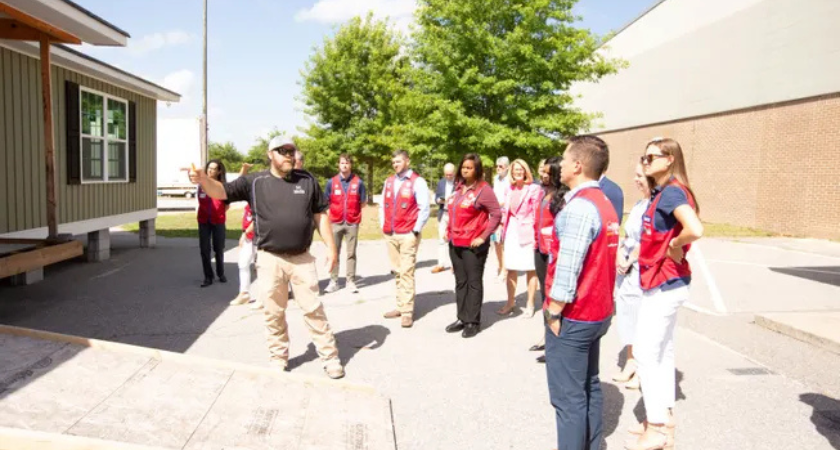
While the construction industry often laments the lack of skilled labor, some training programs are facing a very different problem — too many students and not enough room to train them.

That was the case for Robbie Sharpe, building construction program director at Midlands Technical College in Columbia, South Carolina. His hands-on residential construction training — where students build full-scale single-family homes and sell them to fund the next build — became so popular that he simply couldn't accept any more applicants.
“When representatives from the Lowe’s Foundation heard about the demand for Sharpe’s program, they penned a $1 million grant,” giving him the ability to hire a fourth full-time instructor and nearly double capacity.
“At any given semester, we can take in 48 students,” Sharpe told Construction Dive. “We used to be 24. So we doubled our capacities off of that, and it looks like it’s going to grow even further.”
Sharpe’s success story is part of a broader initiative by the Lowe’s Foundation, which pledged $50 million over five years starting in 2023 to reach 50,000 individuals seeking careers in the skilled trades.
To date, the foundation has already donated $43 million to 60 programs, Foundation Director Betsy Conway said — evidence of just how quickly training demand is accelerating.
Creativity in how schools approach workforce development has skyrocketed, Conway added, with hands-on programs outperforming classroom-only instruction.
One of the major challenges for trade education, especially in rural areas, is simply proximity. Not every prospective student can commute to a campus.
To solve this, the Lowe’s Foundation’s Gable Grants program supports mobile training units that travel directly to communities.
“In Montana, that’s a great example. You’ve got individuals who are really interested in being in the field, but they’re hours away from their local community college,” Conway said.
Instead of forcing students to come to school, the school comes to them.

Sharpe, a former high school teacher, has seen a dramatic shift in student attitudes toward careers.
“Somewhere around seven, eight years ago, you saw this change in mindset,” he said. “Now you’ve got a lot of these students that are like, ‘Yeah, why am I going to go spend all this money on a four year degree when the return on investment’s so much better in these trade areas?’”
This new generation — dubbed the “toolbelt generation” — is actively choosing trades not as a fallback, but as a smart financial path.
Though Midlands Technical students earn their certification building residential homes, Sharpe said around 40% of graduates go on to work in commercial construction.
Conway confirmed the fluidity between sectors, noting that many workers move back and forth throughout their careers, depending on where demand is strongest.
“They’re able to use those transferable skills kind of back and forth,” Conway said.
Both Conway and Sharpe encouraged commercial contractors to actively engage with training programs — not just as employers, but as advisory board members and mentors.
Sharpe said builders who participate in advisory committees get first pick of new graduates.
“It is definitely advantageous for any of these contractors that are looking for employees to reach out not only to their technical colleges, but to their career centers, their high schools and ask to be a part of their advisory committee,” Sharpe said.
Originally reported by Zachary Phillips in Construction Dive.